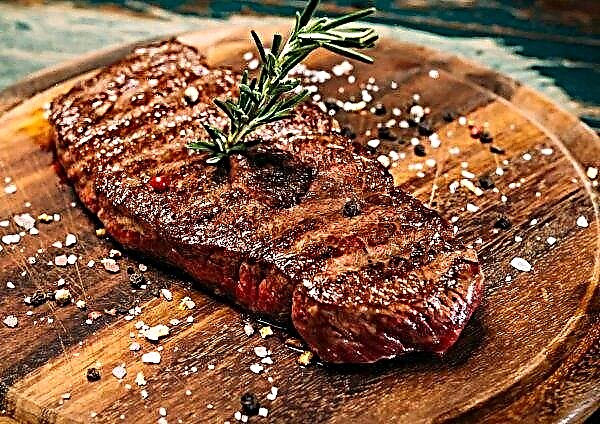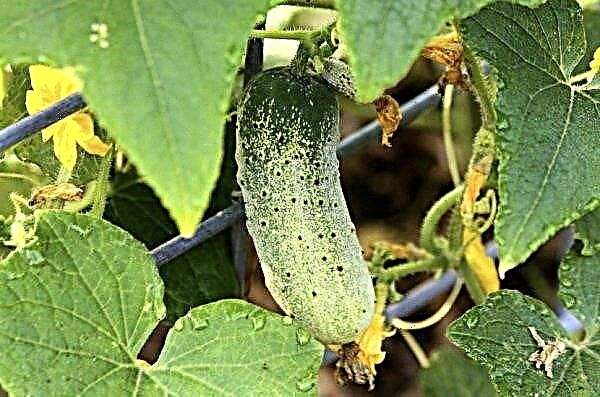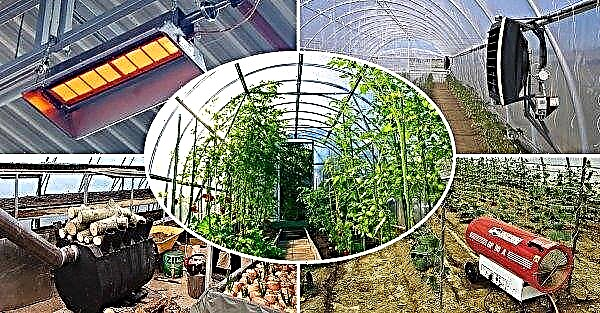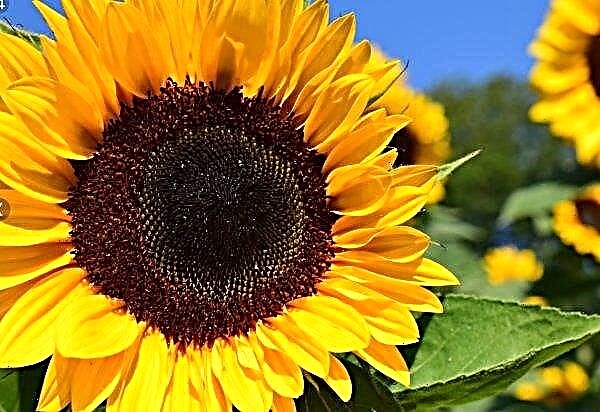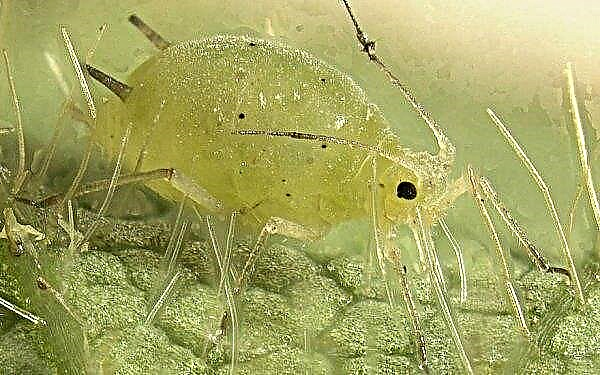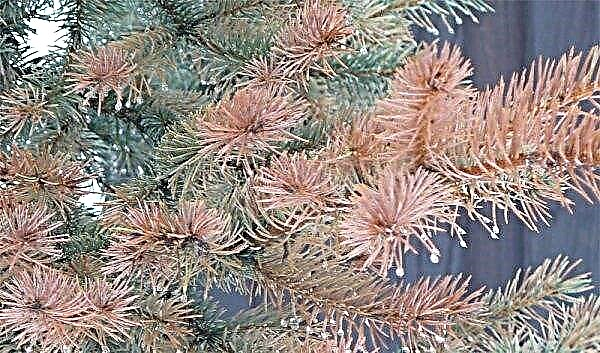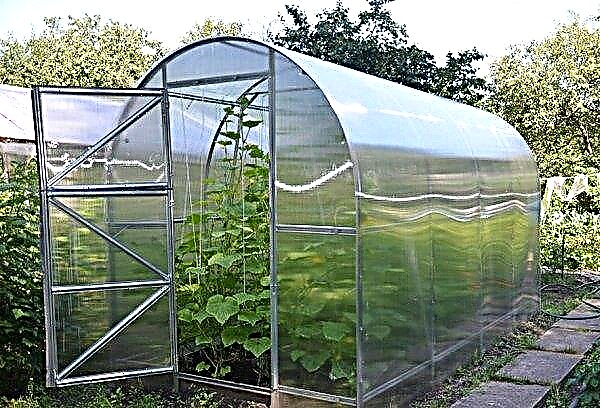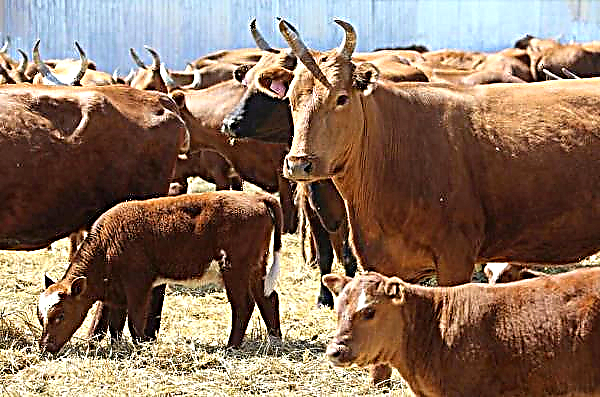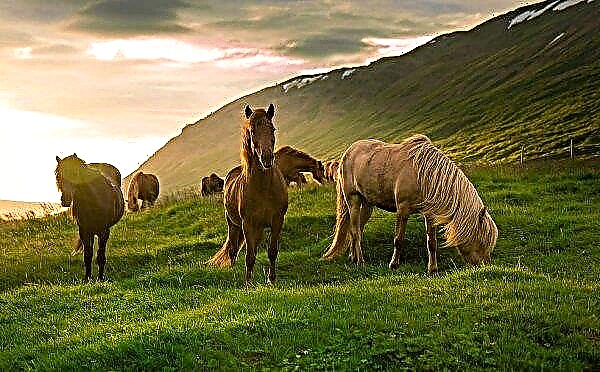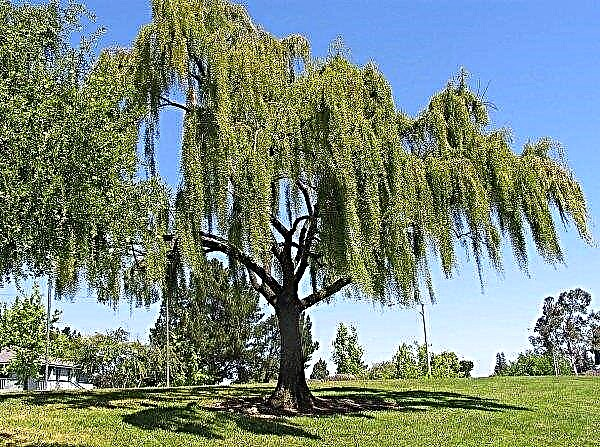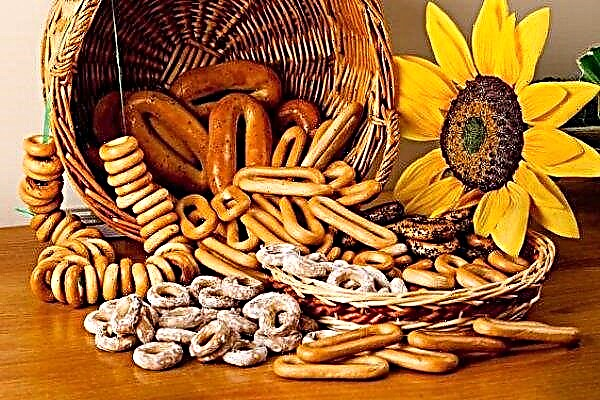Onions are one of the most common vegetables in our dishes and there is nothing surprising here. With a spicy and spicy taste, it is a storehouse of nutrients and vitamins. Due to its characteristics, this vegetable takes pride of place in almost every household plot or garden. However, when faced with such a variety of varieties, it is difficult to make the right choice. Variety Karatalsky is one of the brightest representatives, whose properties are appreciated by the most demanding vegetable growers.
Description and characteristics of onion varieties Karatalsky
The Karatalsky (Karatal) variety was obtained thanks to the fruitful activities of the employees of the Karatalsky Experimental Farm of the Kazakh Research Institute of Agriculture, by manual selection of the previously existing Johnson variety. Regions of Uzbekistan, Armenia, Ukraine, the North Caucasus, Kyrgyzstan, the Volga region, and Kazakhstan are indicated as the most suitable for growing territory by experts. Karatalsky refers to early varieties, with a high yield and excellent keeping quality.
Did you know? Onions are among the most common vegetables in the world; they are grown in more than 175 countries.
The appearance and size of the onion
Karatalsky has a rounded or rounded flat shape. The bulb is white in color, with a dense structure and a semi-sharp taste. Dry flakes are yellow or golden yellow. The feather of this variety is a light green hue, well developed. One bulb gives 3-4 arrows, 120-130 cm high. Bulb mass can reach 200 g with two-year cultivation (turnip) and 90–130 g with one-year cultivation (sowing).
Bulb mass can reach 200 g with two-year cultivation (turnip) and 90–130 g with one-year cultivation (sowing).
Ripening dates and productivity
Onions Karatalsky is an early ripening variety, and the period taken from the first shoots to the lodging of feathers is from 95 to 120 days. The yield index of the variety is quite high and averages 4.4–5 kg / 1 m².
Useful properties and possible contraindications
Onion refers to crops whose beneficial properties have a very wide range of effects on the human body. In addition to the well-known use of this vegetable in the fight against seasonal viral diseases and as an immunostimulant,
- Karatalsky can also be used as:
- tonic and diuretic;
- a method for healing wounds;
- a method of combating disorders in the digestive tract;
- a means of stabilizing the functioning of the cardiovascular system;
- sedative.
- People suffering from the following diseases should carefully inject fresh onions (including green feathers) into their diet:
- acute gastrointestinal disease (ulcers, gastritis);
- kidney and liver disease;
- bronchial asthma;
- individual intolerance (allergy).
- Also, this product should be carefully considered by nursing mothers, since it negatively affects the taste and smell of breast milk.
Features of growing Karatalsky onion from seeds
The Karatalsky variety is unpretentious to the peculiarities of climate and soil, and therefore the seeds of this culture can be sown in open ground, subject to previous aeration and the presence of a drainage coating. The most suitable soil will be non-acidified fertile land.
The most suitable soil will be non-acidified fertile land.
It is also recommended to adhere to the principle of crop rotation, according to which it is necessary to plant onions at the last place of growth of cucumbers, pumpkins, zucchini, cabbage, tomatoes and legumes.
Important! The optimal period for the return of culture to its former place is considered a period of 3-4 years.
Preparatory work before sowing
Although the Karatalsky variety is characterized by its unpretentiousness and is usually characterized by rather impressive final results, only strict adherence to the basic rules of preparatory pre-sowing work, as well as the right choice of planting material, can guarantee quality seedlings.
Favorable timing for sowing
When choosing the dates for sowing seeds of Karatalsky onion, it is necessary to take into account that the temperature of the warmed soil will become the main factor for quick seedlings.
Such conditions become possible from mid-March to mid-April, depending on the climatic and weather conditions of the region. However, procrastination should also not be delayed, since this can lead to late ripening and loss of productivity, especially since onions are crops that can withstand short-term frosts down to –5 ° С.
Important! Sowing onions on greens can be done in stages, after 1-2 weeks, which will ensure the extension of the possibility of obtaining fresh produce.
Seat selection
The plot reserved for beds with onions should be even and sufficiently lit by sunlight, not obscured by adjacent trees and bushes. The composition of the soil will affect not only the final crop, but also the taste of the onion. So, growing in loamy soil gives vigor to the taste of onions, while in sandy loam the vegetable ripens faster. In sandy soil, the vegetable ripens faster.
In sandy soil, the vegetable ripens faster.
Heavy and clay soil is considered the most unsuitable - under such conditions, rare and weak seedlings await the vegetable grower. Land of beds is prepared in the fall. After harvesting, the necessary fertilizing is applied to the soil - organic (5 kg of humus per 1 m² and 8 kg of compost per 1 m²) and mineral fertilizers (double superphosphate in the ratio of 20 g per 1 m² and 15 g of potassium chloride per m²), and also wood ash (in the ratio of 0.5 kg per 1 m²). Under the condition of growing onions in peat soil, nitrogen fertilizers are not applied, and the amount of phosphorus fertilizers is doubled.After top dressing, the soil is dug up several times:
- immediately after cleaning the garden, to a depth of about 10 cm;
- late autumn, to a depth of 20 cm.

With the beginning of the spring period, the soil is again loosened and dug to a depth of 15 cm, which protects it from drying out, and then fertilizers are re-applied - mineral (ammonium nitrate with a calculation of 20 g per 1 m²), as well as part of superphosphate and calcium chloride.
Seed preparation
Preparing seeds for sowing is the basis of a quality crop, which is why experienced vegetable growers begin pre-sowing procedures in early March. There are a number of basic measures that will provide seeds with reliable protection against aggressive environments:
- Rejection - all planting material is immersed in a container of warm water for several hours, after which all seeds that have surfaced are removed, since they are considered empty or too small for high-quality seedlings.
- Disinfection - since all seeds can be carriers of various viral and fungal infections, it is necessary to carry out disinfection work. For this purpose, planting material is placed in a gauze bag, which is immersed in a weak solution of potassium permanganate for 20 minutes. After the procedure, the seeds are thoroughly washed under cool running water. Replace potassium permanganate will be able to 1% solution of 10 g of potassium permanganate, diluted in 1 liter of water. After disinfection, it is recommended to additionally soak the seeds in a biostimulating solution for 15–20 hours.
- Warming up - A procedure for obtaining simultaneous seedlings. For this purpose, the seeds are immersed for 30 minutes in water, the temperature of which is + 40 ° C.
- Quenching - allows future seedlings to easily tolerate adverse climatic and weather conditions, as well as activate immunity resistance to various diseases. Immediately after the warm-up procedure, planting material is placed in the refrigerator for 30 minutes.
- Germination - A procedure that significantly speeds up the first shoots. To do this, planting material is laid out on a paper or fabric napkin moistened with water (natural fabrics are best) and covered with a thick layer of gauze, which is periodically wetted with water. During the first 7–10 days, the seeds germinate, after which they can be sown in open ground.





Sowing technology
Starting to sow seeds, the soil is previously loosened and leveled. Further sowing operations include several stages:
- the depth of the prepared beds is 1.5–2 cm, and in light soils it increases to 3 cm, in order to avoid sweeping the upper layer by the wind;
- the distance between the rows is at least 20 cm;
- the soil in the garden is watered;
- sow onion seeds should be at a distance of about 1-1.5 cm from each other;
- sows onions sparingly enough (per 1 m no more than 80 seeds);
- after sowing, the soil is carefully compacted and watered again.

After the first seedlings appear, the onion is thinned out, and the distance between the seedlings is 2 cm. After 15–20 days, the procedure is repeated, leaving a distance of 6–7 cm. Before the first seedlings appear, the seeds do not need watering, since the crust that forms on the soil surface will significantly complicate this process.
Proper onion care
Despite the fact that Karatalsky onion belongs to unpretentious varieties, nevertheless, like all plants, it is very responsive even to minimal care, which will immediately affect the quantity and quality of the crop. There are a small number of basic rules of agricultural technology, which is guaranteed to give the result in the form of a rich harvest.
Did you know? Today, more than 900 types of onions are known, 228 of which are vegetable crops.
Watering and fertilizing
Onion refers to crops with an undeveloped root system, and therefore urgently needs timely watering. From the end of spring (in May) and until mid-summer, water is introduced into the soil once every 7–9 days, in the evening. In hot and dry weather, the frequency of watering increases by 2 times. At the same time, 1-6 beds of onions will require 5-6 liters of water - so that the soil is moistened to a depth of 15-17 cm.
The water temperature should be in the range of +14 ... + 18 ° С. Beginning in July, irrigation is completely stopped, however, in the conditions of a hot and arid summer, let us irrigate in small portions once every 1-1.5 weeks. Soil fertilization is one of the most important care procedures on which the level of onion productivity directly depends. The best option is the monthly application of mineral fertilizers along with watering until the beginning of July.
Loosening the soil and weeding from weeds
Onion is a vegetable whose yield decreases sharply when the soil is clogged with weed, and therefore it is advisable to carry out the weeding procedure every 2-3 days - this allows you to remove weeds with the root system that has not had time to grow. After each application of watering, it is recommended to carry out loosening, which avoids the formation of a crust on the soil surface. This will significantly enrich the soil with the necessary amount of oxygen.
Plant pests and diseases
The onion variety Karatalsky is quite resistant to the most common diseases, however, knowledge of the main diseases of these plants, as well as methods of control and prevention are required for each gardener:
- Gray rot - is a fungal disease that penetrates the onion during its drying through the unclosed neck of the vegetable. The main signs of the disease are rotten formations at the base of the neck, as well as damage to the upper layers of the bulb. The optimal conditions for the formation of gray rot will be high humidity and increased air temperature in the onion storage room. As a treatment, the treatment of beds is carried out with systemic fungicidal preparations, as well as amendments to the feeding scheme (limitation of nitrogen fertilizers and potassium-phosphorus reinforcement). This method of control allows you to artificially accelerate the ripening of bulbs.
- Peronosporosis (or downy mildew) is expressed in the form of withering of onion feathers, as well as the formation of plaque and light spots on them. The fungal infection is most active in spring. Acting primarily on the aerial part of the plant, the disease quickly affects the bulb itself. After infection, vegetables become carriers of fungal pores, which remain vital until the next season. The methods of treatment vary somewhat, depending on the expected result - growing onions on turnips makes it possible to process the beds with fungicidal preparations. If onions are grown on greens, chemical treatment is considered unacceptable, and therefore changes are made to the care procedures - watering is completely stopped for the duration of treatment, and instead of organic fertilizers, potassium-phosphorus fertilizing is applied to the soil. Prevention involves heating the crop at temperatures of + 40 ° C for 12 hours before sending it for storage and 2 weeks before planting. It is also recommended that the storage is treated annually using bleach (400 g per 10 l of water). It is worth considering that such a procedure can be carried out no later than 50-60 days before the proposed laying of vegetables.
- Bacteriosis - refers to fungal diseases, the main reasons for which is also a violation of the onion storage regimen. The main signs of the disease are a softening of the onion structure, an unpleasant odor, the formation of rotten layers that are easy to see if the onion is cut. The methods of treatment and prevention are the same as in the fight against gray rot.
- Onion fly - pests that lay larvae in the feathers of onions, which, eating plants, lead to its complete destruction: the green part of the onion dries and turns yellow, and the bulb itself begins to rot. Onion flies are most active in mid-May. Fighting insects consists in chemical processing or in the use of folk methods: sprinkling beds with ash, processing with a solution of sodium chloride, with a calculation of 300 g of salt per 10 liters of water or alternating planting of onions with other crops whose smell repels pests (for example, carrots).
- Onion thrips - in winter, lives in the remains of vegetation (uncleaned tops, leaves, etc.), and with the onset of heat it moves to young plants, on whose leaves it lays eggs. Feathers of onions affected by insects quickly wither and die. As a fight against the invasion of these pests, alternating planting onions and carrots is used.
- Onion tick - First of all, it affects the roots of plants, as a result of which the structure of the bulb becomes loose, and the fruit itself is covered with dust. Folk remedies are used as a struggle: prophylactic heating of planting material at temperatures of + 35 ° C for 6-7 days, rejection of deformed and poor-quality bulbs before storage and the fight against the onion fly, which is the precursor of the tick.






There are basic rules of prevention, adherence to which will avoid most diseases and pests:
- planting material is a source of many diseases and a carrier of various pests, therefore both voles and chernushka need mandatory disinfection before landing in the ground;
- most viruses and pests easily tolerate winter cold in the ground and uncleaned plant debris, so in the fall, when doing preparatory work, it is imperative to dig up the soil and carry out disinfection;
- adherence to crop rotation rules will also eliminate the possibility of the occurrence of most diseases.
Harvesting and storage
Full ripening of the onion is characterized by a dried neck of the turnip and feathery feathers - at this stage you can start harvesting. If the vegetable is already quite large, and the weather forecast indicates the expected frosts, the ripening process is accelerated artificially: each turnip is carefully dug by the villas.
Important! In the process of collecting onions, it is recommended not to cut the feathers too close to the turnip, and treat the place of the cut with lime paste, which will help to store the crop for a longer period and prevent it from germinating.
After harvesting, vegetables should be discarded - rotten and spoiled fruits are removed, and onions with not fully dried neck are the first to be used in food. Also, the shelf life can be extended by burning the roots of each fruit with matches. At the same time, it is worth considering that such bulbs will be unsuitable for further planting. Dried onions can easily be stored not only at air temperatures of +1 ... + 5 ° C (in cellars or refrigerators), but also at room temperature, provided low humidity. As an optimal container for storage use boxes with small openings for ventilation, or bags made of dense fabric.
As an optimal container for storage use boxes with small openings for ventilation, or bags made of dense fabric.
Plastic bags are unsuitable, because the onion in them quickly suffocates and begins to rot.Despite the simple, at first glance, the cultivation process, onions can cause some difficulties for inexperienced gardeners.
However, following the rules of basic agricultural activities, as well as timely prevention of diseases and pest attacks, each grower can easily get a high-quality crop in large quantities.


